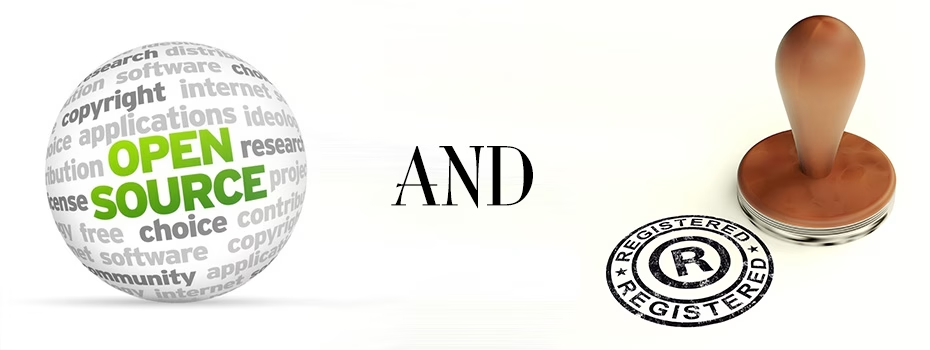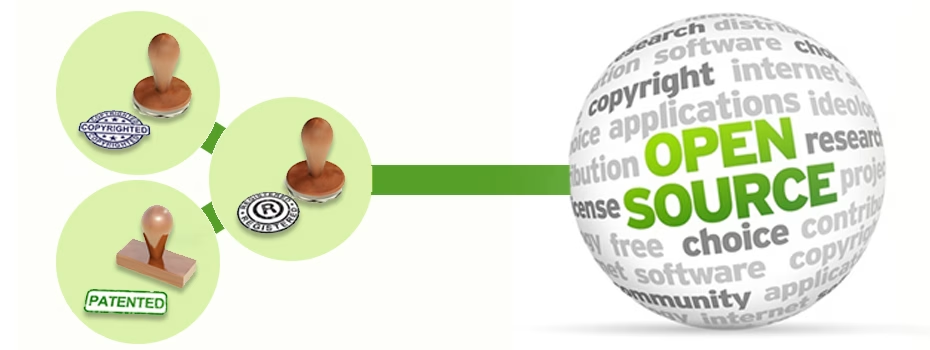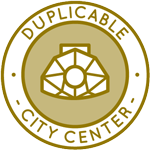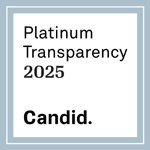
Open Source and Trademarking
This page is an open source guide to trademarking for organizations dedicated to open source creation and sharing. Its purpose is to:
- Explain what and why an open source organization would and should trademark
- Teach the process necessary to trademark something
This page includes the following sections:
- Related Pages
- Ways to Contribute to Evolving this Component With Us
- Key Consultants to the Trademarking Tutorial
- What are Trademarks
- Why Trademark Protection
- Trademarking Tutorial
- Maintaining Your Trademark
- Resources
- Summary
- FAQ
CLICK HERE FOR THE OPEN SOURCE COPYRIGHTS TUTORIAL
ONE COMMUNITY RELATED PAGES
ONE COMMUNITY OVERVIEW | SOLUTIONS THAT CREATE SOLUTIONS | OPEN SOURCE
ONE COMMUNITY OPEN SOURCE FOUNDATIONS (click icons for complete pages)
Click on each icon to be taken to the corresponding Highest Good hub page.
WAYS TO CONTRIBUTE TO EVOLVING THIS COMPONENT WITH US
SUGGESTIONS | CONSULTING | MEMBERSHIP | OTHER OPTIONS
KEY CONSULTANTS TO THE COPYRIGHTS AND TRADEMARKING TUTORIAL
Oz Czersk: Lawyer Specializing in Trademark and Copyright Law
WHAT ARE TRADEMARKS
BACKGROUND
 The marks of a trade, or trademarks, come from ancient smiths and masons who wanted to display their mastery of work and advertise where a customer could buy an item. The same holds true for today, more or less, with the law giving power to a person who has established the mark of their trade. In general, trademarks are enforced mainly to protect consumers.
The marks of a trade, or trademarks, come from ancient smiths and masons who wanted to display their mastery of work and advertise where a customer could buy an item. The same holds true for today, more or less, with the law giving power to a person who has established the mark of their trade. In general, trademarks are enforced mainly to protect consumers.
Trademarks, generally, last as long as they are in use and conceivably can last forever. Some contenders for oldest trademark in the world are Lowenbrau and Stella Artois, both breweries, which claim use dating back to 1383 and 1366, respectively. Some claim to even date back two thousand years, the abbreviation S.P.Q.R. being used by ancient Rome is still in limited use today by the modern city of Rome. The first government registration act goes back to England in 1875, with the first registered trademark being Bass Brewery’s simple design of a red triangle which is still in use and protected today.
A trademark can lose its protection, though, if it becomes too popular and synonymous with whatever it represents. Aspirin, for instance, has become a generic term for a mild pain reliever. Recently, Google has to constantly remind people not to use their company name as a verb to represent any sort of search conducted on the internet. In this way a company can become the victim of its own success.
PROTECTION
What can be trademarked are slogans, company names, logos, scents, and catchphrases, among other things. That does not mean once a trademark has been established the owner has a monopoly over it. There are Delta faucets, Delta Airlines, and a Delta delivery service. The trademark extends only to the market and industry that it is being used in. Coca-Cola is a soft drink, so no other soft drink can be made that is called Coca-Cola. But one can also purchase a Coca-Cola t-shirt. Because they sell both products no one else can make a soda called Coca-Cola or put the Coca-Cola logo on their shirt.
Trademarks are not automatically granted or established. In order to be enforceable a mark needs to be distinct. A mark is judged by its classification into one of five categories:
- Generic, the weakest category
- Descriptive, not much stronger
- Suggestive
- Arbitrary, strong
- Fanciful, very strong
1) A “Generic Mark” is just that, generic. If Apple came out with a “Smartphone” brand of phones, it would not be able to enforce their trademark since smart-phone is the term we all use to describe a cell phone that can do more than just make phone calls. Similarly, a farmer cannot sell “Banana” brand bananas because it would just cause confusion.
2) A “Descriptive Mark” is one that merely describes the good. An example would be Yellow bananas or Steel cars. The mark would not be enforceable since any other company could say their bananas are yellow or their cars are also steel, and so the mark would be confusing to consumers. However, if a descriptive mark takes on a secondary meaning, a meaning different from the literal words, then it can be enforceable. Some examples include Sharp televisions, International Business Machines, and General Motors. Each of the marks have attained a certain quality with the general public, and thus have strength as a brand, that they are able to protect through their marks.
3) “Suggestive Marks” are similarly descriptive of a good or service but it takes some imagination on part of the consumer to glean the intended connection. Making this distinction is the basis for a large portion of trademark law. An example would be Microsoft, which is software for micro-computers (as opposed to large supercomputers).
4) An “Arbitrary Mark” uses something that has a common meaning but no relation to the goods being advertised such as Lotus for sports cars or Apple for computers.
5) “Fanciful Marks” are marks that have been invented solely for the purpose of functioning as a trademark and has no other meaning outside of acting as a mark. These are generally the strongest type of mark. Examples include Exxon, Kodak, or Sony.
CLICK HERE FOR THE OPEN SOURCE COPYRIGHTS TUTORIAL
WHY TRADEMARK PROTECTION
 In the context of the open-source community it might not make sense to establish a trademark. However, it is important to note that many nonprofit enterprises still have and enforce trademarks. One example would be Goodwill. Goodwill’s entire mission is to provide low-cost goods and services to low income individuals. Seemingly, it would not matter if other people use their name as long as they are achieving the same goals. But what if someone is using the name Goodwill in a way that does not align with its goals?
In the context of the open-source community it might not make sense to establish a trademark. However, it is important to note that many nonprofit enterprises still have and enforce trademarks. One example would be Goodwill. Goodwill’s entire mission is to provide low-cost goods and services to low income individuals. Seemingly, it would not matter if other people use their name as long as they are achieving the same goals. But what if someone is using the name Goodwill in a way that does not align with its goals?
Trademarking something to protect the integrity of its alignment with open source or other global-change goals is the point. An unscrupulous individual could use Goodwill’s name and reputation to bilk people out of money and it would be very difficult for Goodwill to prevent this had it not already gone through the process of protecting itself. Years of hard effort and success would be instantly flushed down the drain if Goodwill could not protect its own name and, in a way, its very identity.
For this reason, trademarking slogans, company names, logos, catchphrases and other foundational and distinguishing elements makes sense for open source and world-change organizations. Currently, many open-source initiatives register and strictly enforce their trademarks such as Open Office and Android to name only a few.
TRADEMARK TUTORIAL
 Currently, trademarks are both state and federally protected, mainly because commerce used to be primarily on a state-by-state basis. With the advent of the railroad in the 1800’s, companies could sell their products out of state and federal regulation was needed to ensure protection. You can register in a single state, in all states, federally, or all of the above. It makes most sense to register federally because protection will generally be provided in all 50 states under federal law (NOT state law, though).
Currently, trademarks are both state and federally protected, mainly because commerce used to be primarily on a state-by-state basis. With the advent of the railroad in the 1800’s, companies could sell their products out of state and federal regulation was needed to ensure protection. You can register in a single state, in all states, federally, or all of the above. It makes most sense to register federally because protection will generally be provided in all 50 states under federal law (NOT state law, though).
Think this is a bit over complicated, you are not alone. As a general rule though, if you are doing work and production of material on the internet, register federally.
Registration can be difficult and the US Patent and Trademark Office’s website is not easy to navigate. Luckily, they have a step by step tutorial to guide you through the process: http://www.uspto.gov/trademarks-application-process/filing-online/teas-tutorial#step1
Here is a summary of the process your Trademarking will go through:
- You file your application
- After about 3 months the USPTO reviews your application
- Within 1 month after the review:
- It either publishes the mark or
- It issues an office action (sends you a letter) to clear up any questions/concerns the office has. NOTE: If you don’t respond within 6 months to the office action your application is considered abandoned and you have to start over from scratch
- In 1-2 months if you respond correctly the USPTO will publish the mark or USPTO will issue another office action (sends you one last letter). AGAIN: If you don’t respond within 6 months to the office action your application is considered abandoned and you have to start over from scratch
- The USPTO publishes the mark in its Official Gazette to let anyone who may want to challenge the mark do so
- After 3 months in the Official Gazette the mark will register and you will receive a certificate from the USPTO. You can now change your ➢ to and ®
- Every 5 and 6 years after registering you have to file a Section 8 declaration – this is basically saying you are still using the mark in commerce
- Every 10 years you have to file another Section 8 declaration along with a Section 9 renewal – this is basically saying you are still using the mark in commerce
FLOWCHART OF THIS PROCESS | DETAILED EXPLANATION OF ALL THE STEPS ABOVE
NOTE: The above process is for a mark that is already used in commerce. The process for intending to use a mark in the future is much more complex. It is recommended to do a thorough search of trademarks and, after seeing that there is not one that is close to yours ,using your mark in commerce for a least a few months, and then filing to simplify the entire process.
MAINTAINING YOUR TRADEMARK
Enforcing your trademark, copyright, or patent is your responsibility. It’s important that anyone using any of the methods outlined here understand that the onus is on you to enforce your rights within the current legal system. Courts only function to adjudicate disputes that are brought before them and thus you have to put forth the effort to maintain your intellectual property’s status. For trademark, especially, it is important to commit to the process of enforcement otherwise your trademark may eventually lose its protected status.
Will this happen automatically once someone uses your intellectual property without authorization? No. In fact, it is impossible to catch every single instance of infringement. But, it is important to put in the effort as soon as you discover anything you would consider an infringement.
The most common methods for doing this with a trademark is to send a cease and desist letter. Examples of ours can be found on our Legal Page. This is important because:
- You are showing that you are putting forth the effort in protecting your mark
- You are distancing yourself from the unauthorized user, effectively strengthening your mark
Trademark can be disputed on both a national and state level, so although at first your mark could cover the entire US you could lose it on a state-by-state basis if you do little or no business there. For instance, if you start a chain of restaurants named Burger Barn in California and unbeknownst to you there is another, unaffiliated Burger Barn in Georgia, if you do not enforce your trademark in the name Burger Barn you could eventually lose the right to use your restaurant’s name within the state of Georgia, keeping it in the other 49 states, or the states in which you are already in.
Trademark enforcement is not as exact as copyright since so much of it has to do with subjective qualities. You hope to never have to go to court, but should you ever need to with a large company (i.e. Monsanto, Ford, Warner Brothers, etc.), it will be essential for you to be able to show your past record of doing the necessary things to enforce your mark, even if they didn’t include any prior instance of going to court. In short, these activities strengthen your claim and your mark and a do-nothing or head-in-the-sand mentality could eventually lose your mark.
RESOURCES
Here are some additional resources that you may find helpful:
- US Patent and Trademark Office’s step-by-step tutorial for trademarking
- Flowchart of the complete trademarking process
- Flowchart for what is needed to maintain your trademark
- Detailed explanation of all of the trademarking steps
- United States Trademark Law on Wikipedia
- Overview of Trademark Law on Harvard.edu
- Fact sheet on protecting a trademark from the International Trademark Association
- Trademark information from Cornell University Law School
SUMMARY
 One of One Community’s top 3 values is open source creation. It is our dedication to creating everything we do as open source that has led us down the path of understanding and endorsing trademarks and trademarking as the path to truly preserving intellectual property in the public domain. Hopefully this page helps people understand why, while also providing value and understanding for those not interested in trademarks and copyrights for their specific works.
One of One Community’s top 3 values is open source creation. It is our dedication to creating everything we do as open source that has led us down the path of understanding and endorsing trademarks and trademarking as the path to truly preserving intellectual property in the public domain. Hopefully this page helps people understand why, while also providing value and understanding for those not interested in trademarks and copyrights for their specific works.
CLICK HERE FOR THE OPEN SOURCE COPYRIGHTS TUTORIAL
FREQUENTLY ANSWERED QUESTIONS
Q: How do your trademarks help me?
Once licensed by us to use them (click here for licensing agreement), our trademarks protect your use of these slogans and/or logos too. What’s important to us is that these terms be used for the good of humanity and we’ve done the necessary work to assure we have the strongest possible legal support for this. If you are an organization dedicated to doing positive things for humanity too, we will license you to use these terms and the same legal protection we have established for ourselves will also be provided to you.
Q: I still don’t understand. Please explain in a different way why an open source organization would or should copyright, trademark, or patent something?
We’ve created an entire page about this. Please click this image to visit it:

Copyrights, Trademarks, Patents and Using them to Support Open Source and Free-sharing – Click for Complete Page
Q: I’m doing something similar and would like to use one of your trademarked phrases, how do I go about that?
You would need to fill out our Trademark license agreement. You can find that agreement on our Legal Documents page.
Q: You’ve trademarked “for The Highest Good of All,” does this mean nobody else can talk about or use this term now?
Just because we, or anyone else for that matter, has trademarked something does not mean absolutely nobody else can use it. For our purposes, One Community has defined itself as a non-profit educational company whose mission is to educate the public about alternative solutions to many of today’s problems. “For The Highest Good of All” is therefore constricted to our narrow industry and purpose, namely, nonprofit education to the general public (as opposed to a nonprofit school). Our other phrases such as “Highest Good Food,” “Highest Good Energy,” and “Highest Good Housing” would similarly pertain to nonprofit education of those specific subjects.
The reason we have decided to trademark these phrases is to protect ourselves and the general public. We have worked tirelessly to establish our reputation and good name in the open source and nonprofit communities and we do not wish to see our name, ideals, terminology, or goals to be misappropriated and used in a way that harms ourselves, our mission, or anyone else.
Q: When do I own my trademark?
Automatically, but, you have to establish the mark “in industry.” This means the mark becomes stronger over time and the more popular your service/product gets. It also only extends to the industry, product type, and geographic area you serve.
Q: Why register then?
Registration provides the assumption that you really do own your mark and after five years if nobody challenges the registration, it becomes even more powerful evidence of the marks strength and establishment “in commerce.” Also, you are putting the general public and any competitors on notice that you are using this particular mark.
Q: What is the difference between the small ➢ and the small ®?
The small “R” means that the mark is already registered and is a pretty strong mark. The small “TM” means that it is not necessarily registered, but is being used and is being made into a fully established mark.
Q: How do I know when I could/should change my ➢ to an ®
You will receive a certificate from the USPTO after the process described above takes place.
Q: Do I have to use the ➢ or ® symbols?
You are not legally required to add it after you have registered for your mark to be enforceable. Not using these marks, however, essentially defeats the point of registering in the first place. The ➢ symbol is informal and has no legal weight, it signals to the public your intent in enforcing your mark, whereas the ® in a circle symbol is formal and has legal weight. It puts the general public on notice that you have a registered and recognized symbol that cannot be used. Not showing either does not put the public on notice, but does not put the mark in the public domain. BUT, in a legal action you forfeit your rights to any damages unless you can prove the person using your mark without permission had actual knowledge your mark was registered before the infringing use.
Using the symbol properly gives the public constructive knowledge of the registration, meaning whoever sees it should have the knowledge of its registration. To properly use the symbol it should be in superscript at the upper right hand corner of the mark. If it is aesthetically displeasing or impractical to place it there, then it should be dropped to the lower right hand of the mark, phrase, etc. Never place it above, below, or to the left of the mark. This is not the law, but instead is standard practice and adherence to the norm is advised.
If your mark is a plain text mark (i.e. word(s) with no logo) then you do not have to put either symbol every time you use the mark in text, just the first time or in the most prominent fashion (such as in a title page to a report or in the first use of the mark in that report if no title page is given).
Q: If something is on the internet, it’s in the public domain, right?
No. Just because something is posted on the internet does not mean it is in the public domain. It is like putting a painting in your front window. Everyone can see it but it would be a crime if someone went into your house and took the painting without your permission.
In this way, just because a trademark is on the internet doesn’t mean you can use it for whatever purpose you want.
Q: How much does it cost to register a trademark?
For the federal office, it starts at $225 and can go up to $375.
Q: Why the differences in cost?
The USPTO uses different forms and has different processes for registering their marks. The $225 option is generally “faster” in their eyes as you have categorize your mark in one of a few already established categories, thereby getting around proving what you are trying to protect, and also this option is exclusively digital, getting rid of their internal process of having to digitize the form.
Q: If I change my mark do I have to go back and reregister?
Generally no, not if the mark is only slightly different. It would, however, be a good idea if you are going to use the new, updated version of the mark instead of the older previously registered version. If it’s a temporary use, like a pink version of your logo to support breast cancer awareness month, then you would probably not have to. However, if the logo change is permanent it would be a good idea to go back and reregister.
Q: How long does trademark last?
Indefinitely as long as it is being used, unless the mark becomes so popular that people can’t distinguish it from the product being described (think of Kleenex or Aspirin).
Q: What things are not trademark protected?
Weak or general marks as described above.
Q: I established my trademark, I now have a monopoly on that thing, right?
No. Trademark infringement is about consumer confusion. So your trademark only extends to your industry, your product type, and your geographical area.
Q: What if I want to make a comment on a particular trademark?
You can. It is called parody. One can parody the logo if she is making a political or societal statement on the product itself.
Q: What if I’m writing a news article?
You can show or use a trademark as long as you are not implying any sort of endorsement. Showing a rival’s trademark in an advertisement is even allowed if you are using it to compare two different products (ie. One tastes better than the other).
Q: What if I just want to MENTION a trademark?
In trademark law there is what’s known as the “deminimus” use of a mark, meaning a minimal only passing use or mention of a trademark. Generally, it is not infringement if you only using the mark to identify a brand, service, or product as long as absolutely no endorsement or connection occurs between the brand and yourself.
As an example, if I wanted to conduct an online poll to determine which of the members of One Direction is the most popular, I could use the name of the band and each of the band members’ names in the poll and in any advertising of the poll. However, if I state that this was an official poll being conducted by One Direction, or any of the members, or if I stated the band or any of the members preferred my poll or polling method, I would be in trouble.
Q: What do I need to do to maintain my trademark?
To maintain your trademark you need to be sure that nobody else is using it “in commerce” (in the same industry and capacity as you are) on a regular basis. This could consist of looking up ➢ registrations on the USPTO site from time to time and also performing web searches. It will be impossible to find everything, however, not putting in any effort could eventually lead to a chipping away of the strength or enforceability of your mark.
Further, the USPTO requires paperwork be filed every 5 and 10 years after your mark is officially registered. Every 5 years you need to file a Section 8 declaration (basically saying you are still using your mark) and every 10 years you need to file a combination Section 8 declaration and Section 9 renewal (again basically saying you are still using your mark). On the plus side, though, after the first 5 years after you register you are eligible to file an “incontestability” form further elevating and strengthening your mark. Click here for a Post Registration Timeline and flow chart showing the process.
Q: What if I move, how do I keep my information current with the government?
Things happen and sometimes people, or even companies, change addresses. When this happens it is typically a good idea to tell the government you have changed your address if you have registered or are trying to register a trademark. There are similar procedures for Copyrights (if you registered, which is not required) and Patent, but if you’ve read our guide on options for protecting intellectual property without filing a patent (found here), then you might not need to do so.
As with any government agency you need to file a form. You can perform a Google search for the form you are looking for (a change of address form) or your can simply follow THIS LINK.
Be forewarned, the process can be complicated since there are several forms to choose from. First things first, if you are working with an attorney you would simply notify the attorney that you are moving and she would be the one to do this for you (there is no filing fee involved for changing your address).
If you are doing this yourself though, then understand that you are filling two roles at the same time when dealing with the USPTO ” first as owner of the trademark and second as the official correspondent the USPTO will communicate with. This is crucial because if you did have a lawyer you would only be the “Owner” and your lawyer would be the “Correspondent” instead. This is important to keep in mind because there are two forms to choose from. If you are acting as both you will need to fill out both UNLESS the two addresses are identical. If you are moving into a new building, for instance, and you want to have the ownership address listed as “123 Maple Street” but your correspondence address listed as “123 Maple Street, Attn: Roger” ” the two addresses would not be considered to be identical and you would need to fill out two forms.
Regardless of whether you need to fill out one or two forms, actually filling out the form is simple and you can do it completely online in only a few minutes. Once you get to the appropriate form you will be asked to put in the serial or registration number of your trademark. The two different numbers exist for the same trademark because one exists for the application of your trademark and the other exists for your trademark after it has been granted registration, but both numbers can be used interchangeably to look up the same information. If you have more than one trademark you can enter multiple numbers and it will update all information for all of your trademarks at the same time so long as they are all owned under the same official person or entity. So if you as an individual own two trademarks while your company owns three others, even if the addresses are the same for both you and your company, you would need to fill the form out for the two different sets of trademarks.
Once you look up your trademark’s information, you will be guided to the form itself, which is pretty straightforward and includes directions. You will be shown the current information on record and then scrolling down you will see empty places for you to put in the new address. Fill out the required information but understand that anything you put in there will be available to the general public. Verify, sign (which you can do online), and submit and you should receive a receipt and e-mail notification. It will take a few days for the changes to be made official, which you should confirm using the link that will come in your email receipt.
 One Community
One Community









